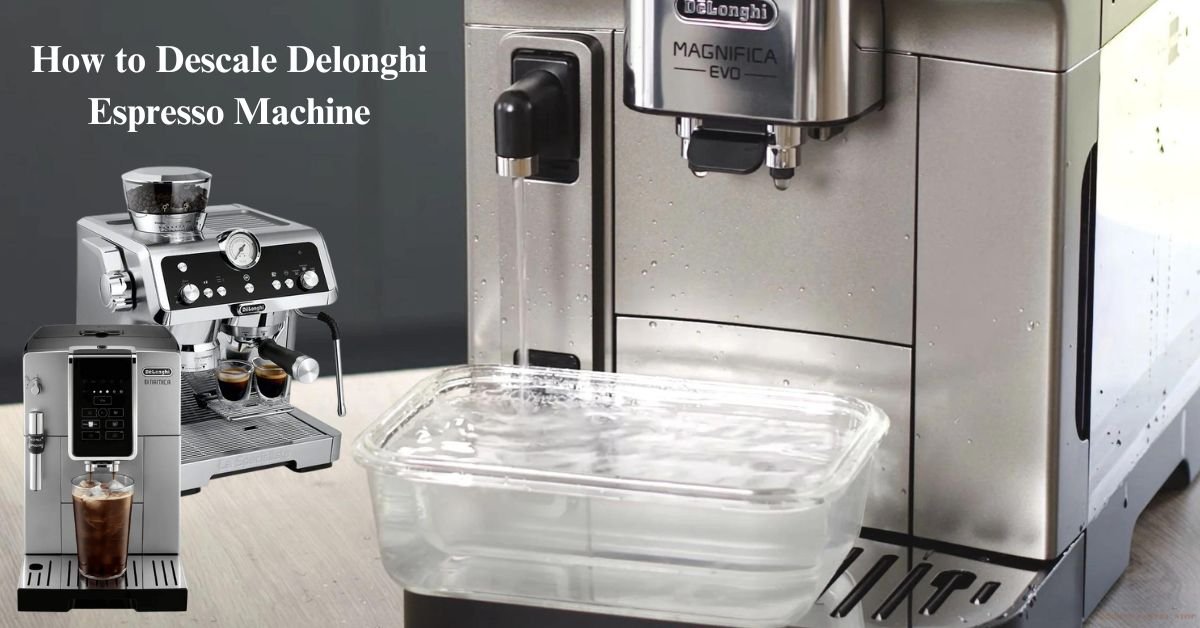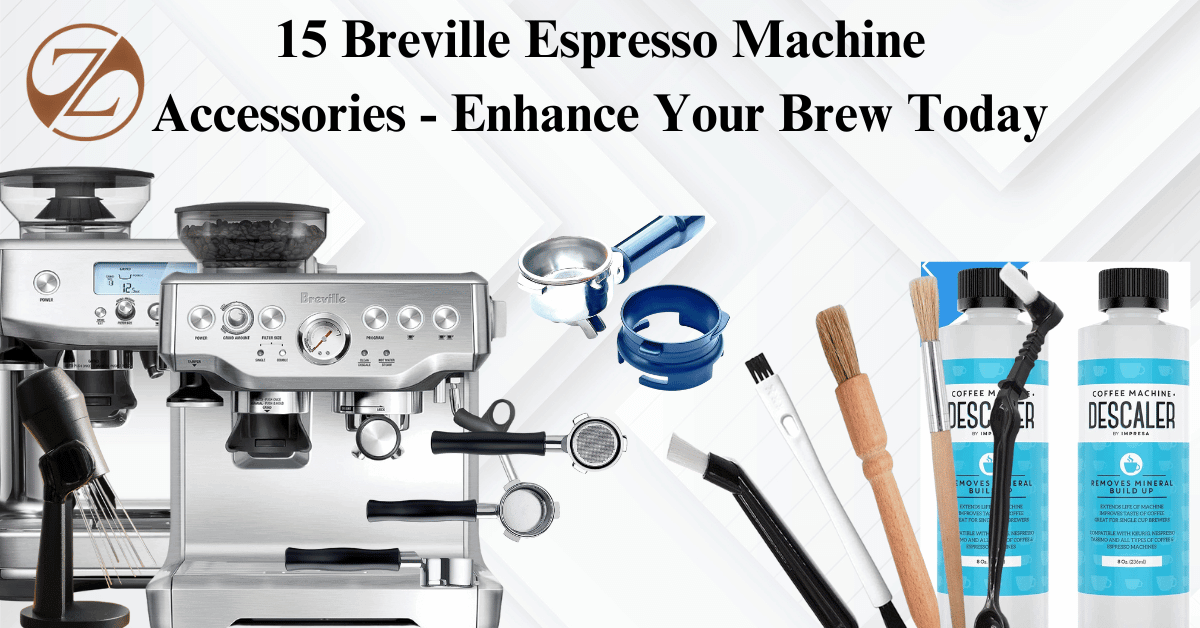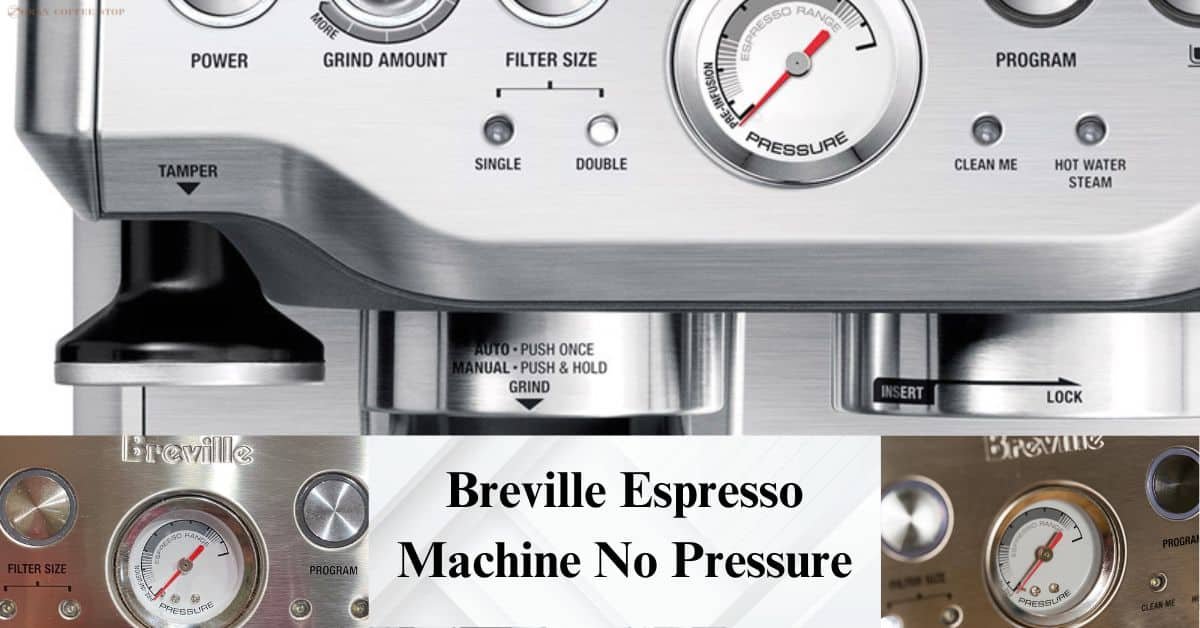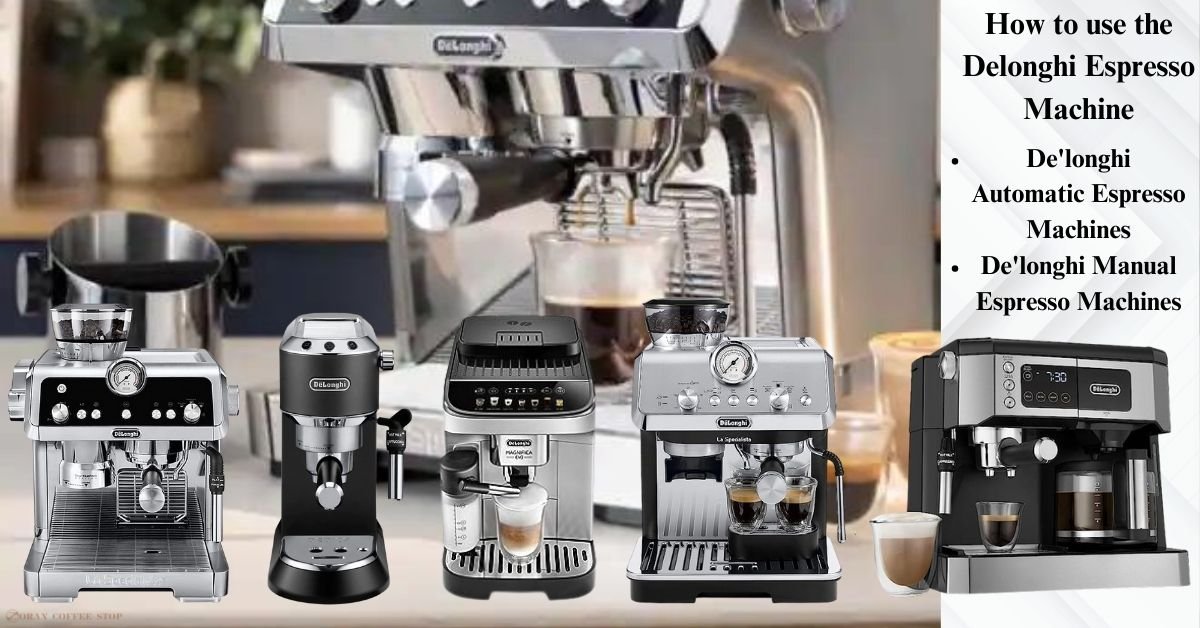Are you wondering How to Descale Delonghi Espresso Machine? Signs that your DeLonghi Espresso Machine needs descaling include sluggish brewing, less creamy coffee, and strange noises during operation. Descaling removes mineral deposits that can affect the taste and performance of your machine.
To prevent limescale buildup, use a water filter, clean regularly, and consider using distilled or bottled water. Regular descaling is essential, especially in hard water areas. Deposits can build up over time and affect the taste of your coffee. It also helps extend the machine’s life and improve its performance.
In this article, I’ll share my tips on how to Descale a DeLonghi Espresso Machine and also include some information about why descaling is important and how often you should do it.
The Importance of Descaling and How Often To Do It
Descaling your DeLonghi Espresso machine is a crucial maintenance task that should not be overlooked. Over time, mineral deposits from the water supply can accumulate within the machine’s water system. These deposits can lead to a host of issues that can affect both the performance and the flavor of your coffee.
Mineral deposits can clog the machine’s water pipes, making it difficult for water to flow through. It can lead to a decrease in the water flow, affecting the taste of your coffee and making it difficult to extract the desired amount of espresso. If mineral deposits are not removed, they can eventually damage the machine’s internal components. It can lead to costly repairs or even needing to replace the appliance.
Mineral deposits can also affect the taste of your coffee. They can make your coffee taste sour or bitter and interfere with the extraction process, resulting in a weaker cup of coffee. The frequency with which you need to descale your machine will depend on the hardness of your water. You must descale your machine every 3-4 months if you have hard water. If you have soft water, you may only need to descale your appliance once a year.
Descaling Solutions for Delonghi Espresso Machine
It’s crucial to use a descaling solution specifically designed for espresso machines. One popular and recommended option is the DeLonghi EcoDecalk Descaler.
The DeLonghi EcoDecalk Descaler is an eco-friendly and biodegradable descaling solution. It is made with natural, high-quality, and food-safe ingredients, making it safe for you and your coffee machine. This descaler is formulated to dissolve limescale and mineral deposits, ensuring optimal performance and extending the life of your DeLonghi coffee machine.
When using the DeLonghi EcoDecalk Descaler, follow the instructions provided by the manufacturer for the best results. Regular descaling with this solution will help maintain the quality of your espresso and keep your machine in excellent condition for years to come.
Remember: Always use a descaling solution recommended by the manufacturer to ensure the longevity and efficiency of your DeLonghi coffee machine.
Other Recommended Descaling Solutions
- Urnex Dezcal is a popular and widely used descaling solution for espresso machines, including DeLonghi models. It is a citric acid-based descaler and is known for its effectiveness in breaking down limescale and mineral buildup.
- Durgol is a Swiss-made descaling solution that is often recommended for espresso machines. It is a powerful descaler that works quickly and efficiently to descale the machine and maintain its performance.
- Although marketed for Gaggia machines, the Gaggia Decalcifier is compatible with various espresso machines, including some DeLonghi models. It is a limescale remover that can effectively clean the water system of the espresso machine.
- Essential Values Universal Descaler is a versatile descaling solution that can be used for various household appliances, including espresso machines. It is a cost-effective option that has received positive reviews for its descaling performance.
How To Descale Delonghi Espresso Machine (Simple Steps)
Ensure that you read and understand the manual with your DeLonghi espresso machine. Each model has a different design, and descaling processes may differ according to these features.
Preparation
Gathering all the needed materials before you begin descaling your DeLonghi espresso machine is important. To descale your DeLonghi espresso machine, you will need the following:
- DeLonghi or a homemade descaling solution
- Clean water – freshness is key for that perfect brew!
- A container to mix the descaling solution and water – we’re about to create some espresso magic!
- A trusty cloth or sponge to wipe down the machine’s exterior – a little cleaning never hurts!
- Don’t forget a towel or cloth to catch any potential spills – better safe than sorry.
Ensure the espresso machine is turned off and unplugged to prevent any accidents during the descaling process. Remove any coffee grounds or leftover coffee from the portafilter and group head.
Empty the water tank and remove the water filter
The first step to descaling your DeLonghi espresso machine is to empty the water tank. If the tank is removable, remove it and empty its contents. If the tank is not removable, use a measuring cup or pitcher to scoop out the water.
Pro Tip: If you have hard water, rinse the water tank with vinegar before emptying it. It will help remove some limescale deposits that can build up over time.
Prepare Your Descaling Solution
Once the water has been emptied, you need to prepare the descaling solution. The descaling solution is made up of water and a descaling agent. Remember to be careful not to spill the descaling solution. If you spill the descaling solution, be sure to wipe it up immediately. The descaling solution can be corrosive and damage surfaces if not cleaned up properly.
To prepare your descaling solution, you have several options. Concentrated solutions typically mix 1 part descaler with 1 part water. Tablets may require dissolving a certain number in water, like 2 tablets in 500ml. For a natural approach, use 1 part white vinegar to 1 part water. Some brands offer ready-to-use solutions, while others provide pre-measured packets.
Always follow the product instructions for accurate measurements and safe descaling of your espresso machine.
Fill the water tank with a Mixture
The descaling solution should be poured into the water tank after the descaling solution has been prepared. If the water tank can be removed, place it back in the machine.
Start Descaling
Turn on your espresso machine and select the descaling cycle and the process will start automatically. The descaling cycle will vary depending on the model of your espresso machine. Using your user guide, determine how to start the descaling process. Typically it takes around 30 minutes. However, the exact time may vary depending on the model of your machine and the severity of the limescale buildup.
Every Delonghi Espresso Model is different. Make sure to follow the instructions on the label. This will help to ensure that you descale your machine properly and avoid damaging it.
Run the Machine with Clean Water
After the descaling cycle, rinse the water tank thoroughly, fill it with clean water, and run the machine again. This will help to remove any residual descaling solution from the machine.
To run the machine in order to Rinse it, just press the Settings button and choose the Rinse option displayed on the screen. This function will deliver hot water from the coffee spouts to clean.
Repeat the Process
It is possible that you will need to repeat the descaling process more than once, depending on the severity of the scale buildup. After each descaling process, be sure to rinse the water tank and run clean water through the machine.
Descaling a DeLonghi Espresso Machine with Other Alternative Products
While it’s recommended to use a descaling solution specifically designed for espresso machines, you can try some other handy alternatives. Citric acid is a natural and safe descaling solution that can remove limescale buildup from your DeLonghi espresso machine. Here’s how to do it:
- Ingredients
- Citric Acid – 1 tbsp
- Water – 2 Liter
Preparation
- Take 1 tablespoon of citric acid with 1 liter of distilled water to prevent the citric acid from reacting with any minerals in the water, which could reduce its effectiveness.
- You can now add the solution to your DeLonghi espresso maker’s water tank.
- Start your DeLonghi espresso machine and let it run for a few minutes or until half the solution is gone.
- Allow the solution to sit inside your DeLonghi espresso machine for 20-30 minutes before turning it back on.
- The rest of the solution will run through your DeLonghi espresso machine as soon as you turn it on again.
- After the solution has passed through the machine, rinse the water tank and fill it with clean water.
If any solution remains in the engine, Rinse the machine thoroughly after descaling. This will help to remove any residual citric acid solution from the machine. Be careful not to overfill the water tank. If you fill the tank, the citric acid solution could overflow and damage the machine.
How To Clean Delonghi Espresso Machine
Do not mix up cleaning with descaling; they are not the same. Cleaning removes coffee oils and other residue from the machine. This is important to do regularly to prevent the build-up of these substances, which can affect the taste of your coffee. Cleaning can be done with a mild detergent and water or a commercial espresso machine cleaner. While descaling goes deep inside the machine to bust those pesky mineral deposits.
Difference Between Cleaning & Descaling
| Cleaning | Descaling |
|---|---|
| Removes coffee oils and other residues | Removes limescale buildup |
| Done regularly to prevent the build-up | Done less frequently, depending on water hardness |
| Can be done with mild detergent and water, or with a commercial espresso machine cleaner | Typically done with a descaling solution, made with citric or lactic acid |
| Does not damage the machine | Can damage the machine if not done properly |
Steps for How to Clean Your DeLonghi Espresso Machine
In order to maintain hygiene, it is essential to clean the steam wand after every use. The steam dial should be turned to deliver a little steam for a few seconds to clean the steam wand. The steam dial causes the milk in the circuits to be released. Turn off the machine to cool it down, then turn the tube clockwise and release it. Clean it thoroughly with warm water and detergent and place it back in.
The brew head is the part of the machine that makes the espresso. To clean the brew head, remove it from the machine and soak it in water. Then, scrub it with a soft brush and place it back.
The drip tray and filter holder catch the coffee grounds and other debris. To clean them, remove them from the machine and rinse them with hot water. The frequency of cleaning your espresso machine depends on how often you use it and the type of beverages you make. As a general rule of thumb, regular maintenance and cleaning are essential to keep your machine in top-notch condition and ensure that your coffee remains delicious.
Remember: the cleaner your machine, the better your coffee will taste. Neglecting regular cleaning and maintenance can lead to clogging, poor performance, and even damage your espresso machine.
Conclusion
Descaling and cleaning your DeLonghi espresso machine regularly is essential to keep it in top condition and ensure that your coffee always tastes its best. By following the simple steps outlined in this article, you can easily and effectively descale and clean your machine, so you can enjoy delicious espresso for years to come.
Regular descaling, especially in areas with hard water, is crucial to prevent mineral buildup and maintain the quality of your coffee. Using a recommended descaling solution, like the DeLonghi EcoDecalk Descaler or other trusted brands, ensures the process is safe and effective. In addition to descaling, don’t forget to keep your DeLonghi Espresso machine clean by regularly cleaning the steam wand, brew head, drip tray, and filter holder.
This simple maintenance routine, combined with proper descaling, will keep your machine running optimally and deliver consistently delicious espresso. So, make it a habit to follow the manufacturer’s guidelines for descaling frequency and cleaning procedures to enjoy exceptional coffee for years to come.
How do I clean my DeLonghi espresso machine with descaler?
First, ensure the machine is turned off and unplugged. Empty the water tank and remove any water filters. Prepare a descaling solution by mixing 1 part descaler with 1 part water (for concentrated solutions) or following the package instructions. For a natural alternative, mix 1 tablespoon of citric acid with 1 liter of distilled water. Pour the solution into the water tank and place it back in the machine. Turn on the machine and select the descaling cycle, Allow the solution to run through the machine, and then run the machine with clean water to rinse out any residue. Repeat the process if needed, and be sure to follow your machine’s specific descaling procedure outlined in the manual for the best results.
Can I use vinegar to descale my DeLonghi espresso machine?
Yes, you can use vinegar to descale your DeLonghi espresso machine. However, it is not the best option. Vinegar is a natural acid that can be effective at removing limescale buildup. However, it can also be corrosive and damage the machine if not used properly.
It is important to dilute vinegar with water before using it to descale your machine. The best dilution ratio is 1 part vinegar to 3 parts water. You should also avoid using white vinegar, as it is more acidic than other types of vinegar.
What chemical is in DeLonghi descaler?
DeLonghi Descaler includes water, sodium laureth sulfate, sodium citrate, trisodium phosphate, sodium benzoate, and tetrasodium EDTA as safe and effective ingredients for removing limescale buildup in espresso machines. The DeLonghi EcoDecalk Descaler is formulated with lactic acid, a natural and safe acid for espresso machines. Lactic acid effectively removes limescale buildup. Citric acid is also commonly used in DeLonghi descalers for its natural effectiveness and safety. Citric acid is safe for the machine and the environment when used as directed. Lactic acid is gentler than other acids and is biodegradable and non-toxic, making it a responsible choice for descaling. Always adhere to the manufacturer’s instructions for proper usage.




